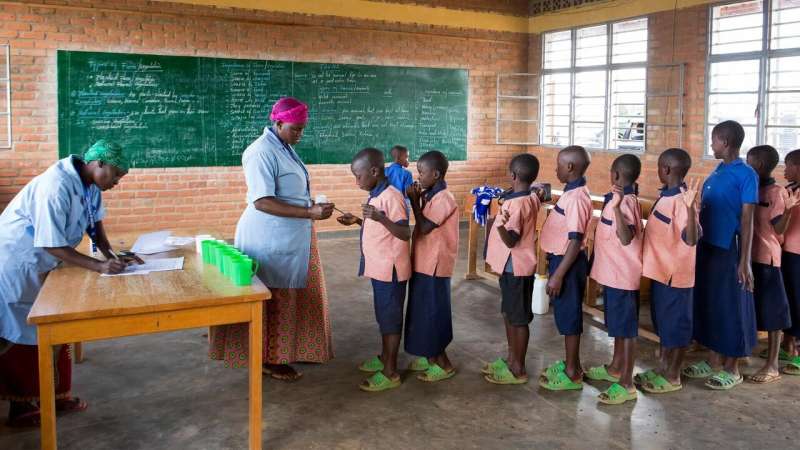How systems thinking can help stop neglected tropical diseases

Despite being easy and inexpensive to treat, a group of common bacterial and parasitic infections kill hundreds of thousands of people in tropical countries each year. In a new paper, Yale SOM's Teresa Chahine and her co-authors map the complex system of stakeholders surrounding the diseases and identify key leverage points for making progress. Chahine says that philanthropy and aid efforts can actually contribute to the persistence of complex social challenges, and systems thinking allows organizations to target their interventions in the right ways to make an impact.
Neglected tropical diseases, a group of 20 bacterial and parasitic infections common to tropical countries, kill around 350,000 people each year and infect many more, causing chronic illness, blindness, and disfigurement. Their toll is heaviest among the poorest, most vulnerable people in the world.
For all the suffering they cause, NTDs are easy and inexpensive to treat. Several are entirely preventable with medication costing as little as 50 cents per person per year—making NTDs one of the "best buys" in global public health. So why, despite sustained attention from public health agencies and aid organizations, does the problem persist?
For a problem many see as comparatively simple to solve, the hurdles are still significant. NTDs are underfunded. Many of the most afflicted countries don't view them as a political priority or have the logistical capacity to get drugs into the hands of people who need them. Programs aimed at addressing NTDs often operate in silos, disconnected from related development efforts.To Yale SOM's Teresa Chahine, NTDs are a prime example of what social innovation scholars call complex problems—societal issues that involve a diverse group of actors trying to respond to shifting contexts and strategies.
They are also a good example of a problem that can benefit from a "systems thinking" approach. "When people are trying to solve a social problem," Chahine explains, "a big mistake they make is that they just see one part of the system"—not the messy whole. Systems thinking helps combat that challenge by identifying big-picture patterns and relationships and identifying "leverage points," areas where small changes could have an outsized positive impact.
For a new study, Chahine and her co-authors—Jeffrey Glenn of BYU, Kimberly Kamar of the END Fund, Zaiyanatu Abubakar Umar of Nigeria's Ministry of Health, and Nils Daulaire and Thomas Bossert of Harvard—applied a systems thinking approach to NTDs. Glenn, then a student of Chahine, reviewed existing studies, convened a workshop with leading NTD organizations, and interviewed key players at all levels of the system. With that knowledge, the researchers created a visual model of the entire NTD system and identified several leverage points.
"There is frequent talk of systems thinking as an important approach for problem solving," says Glenn. "What is much less frequent is the actual application of systems thinking tools to real-world problems. Our study attempts to bridge the gap."
The study illustrates how systems thinking can be applied to complex public health problems, Chahine adds. By taking this zoomed-out approach, "we can identify the leverage points at a systems level, instead of just throwing money at the problem or trying to come up with innovative solutions that are really only Band-Aids and don't address the root cause."
After gathering all the information they could about the NTD community, the researchers analyzed their interviews and materials for common ideas and observations. After identifying six overarching themes, they detailed the positive and negative forces at work within each. Then, they created a visualization that they shared with stakeholders and refined. Finally, with the system fully mapped, the researchers could discern the five most important leverage points.
First, they noted, organizations need to set more realistic goals about NTD elimination. Many interviewees felt that current goals are too ambitious, resulting in donor frustration and fatigue when organizations fail to meet benchmarks.Second, non-pharmaceutical interventions—vector control measures, improved sanitation, and so on—need more support. Drug donations from pharmaceutical companies have resulted in medication being viewed as the cheapest and best tool to address NTDs, to the exclusion of other measures that may be equally effective.
Third, the NTD aid effort would benefit from reduced reliance on international donors, who inevitably set the priorities and agendas within countries. When countries feel greater ownership over their programs, it can help them build longer-term solutions for sanitation, fresh water delivery, and healthcare administration. "This is the kind of thing I get really excited about—reducing donor dependency and building capacity," Chahine says.
Fourth, they found, the global NTD community is too insular. "We see this a lot in the international aid community in general, and unfortunately in global health," Chahine observes—and it discourages new organizations with new ideas from joining the fight.
Fifth, organizations need to consider health worker incentives. Many entities rely on local volunteers to act as drug distributors in their communities; in recent years malaria and polio elimination efforts have begun offering small stipends to these workers, making them reluctant to work for any programs without stipends. By addressing this challenge, organizations can make sure drugs will actually reach the people who need them.
Changes in these areas, the researchers believe, have the potential for system-wide transformation. "These five points were not necessarily completely novel ideas, but are now highlighted in their essential role in global efforts to control and eliminate NTDs," Chahine says. "This is where you can get the biggest social return on investment."
Targeting efforts in the right ways is essential, because it's all too easy for philanthropy and aid to become, perversely, the very forces that allow problems to continue. "In many ways, that's what has happened with NTDs," Chahine says. She hopes this research will help by shifting the focus away from quick-win solutions and toward collaboration, "because the whole point is that in all complex contexts…[change] can only be achieved through continual collaboration that generates joint learning and innovation."

















